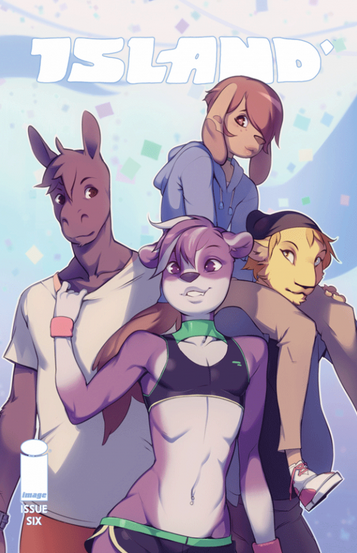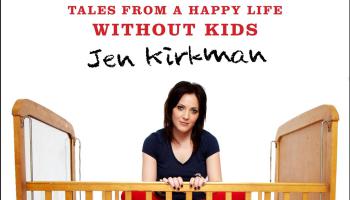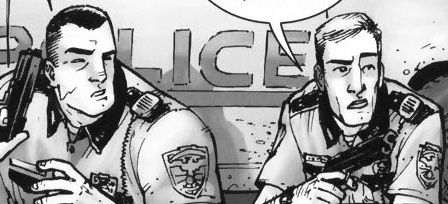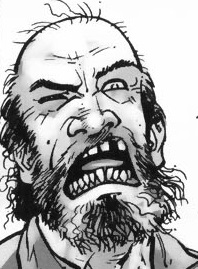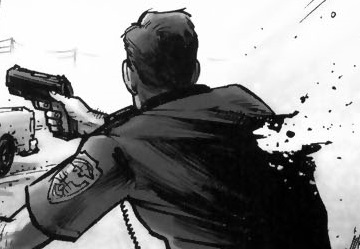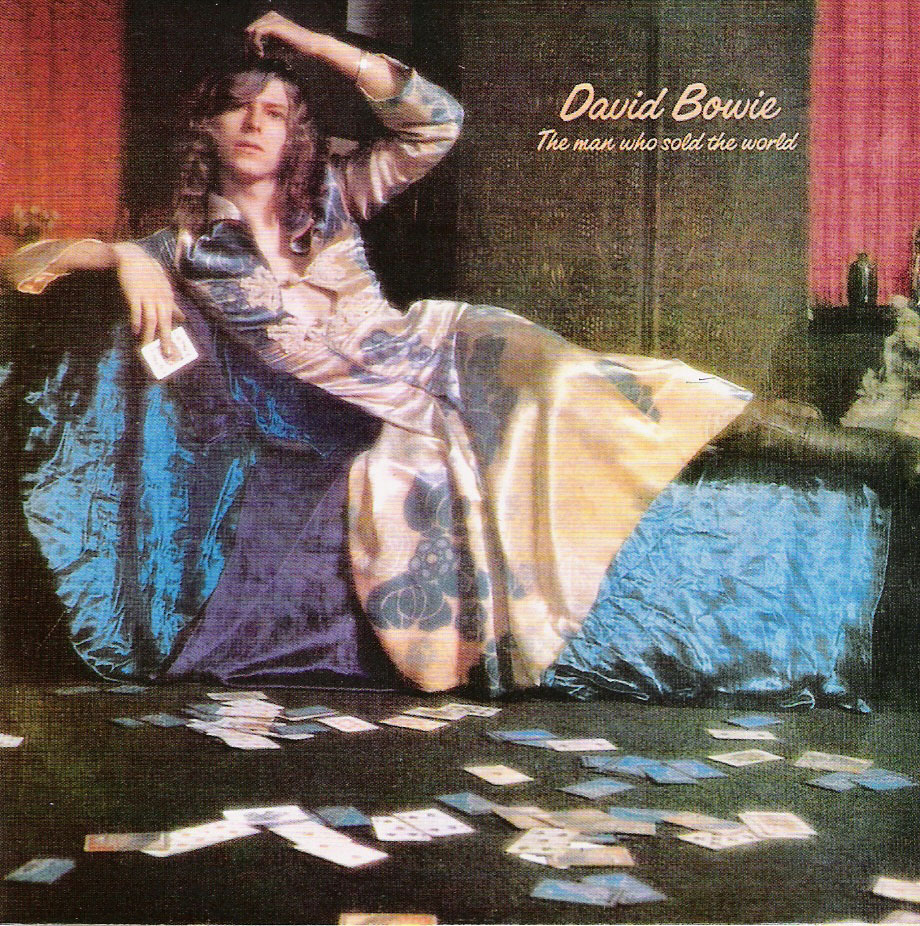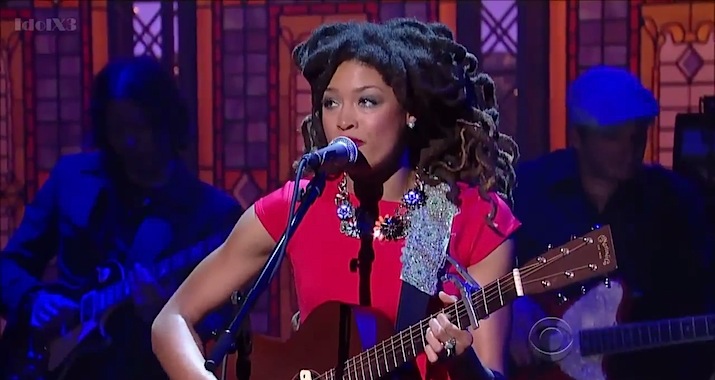ISLAND #6 / IMAGE COMICS / BRANDON GRAHAM & EMMA RIOS / COVER ART BY ONTA
I would like to talk about the cover of this comic book anthology. Your furry media critic wants to cheer herself up for a change. I’ve accepted reluctantly that furries will continue to be indiscriminately horny online in perpetuity, regardless of context or consequense. And outside media will continue in turn to find in us an opportunity for inspirational tourism or, depending on how the wind is blowing, a convenient excuse to say “look at these fags, lol” without saying exactly that. In my writing about this landscape, my attempts to reply to these prying eyes with the same condescension and derision from the other side of the glass haven’t really made me feel happier or smarter or more secure in my own voice. The tea of bitterness in which I steep has not proven exactly nourishing. So I’m writing about something that makes me happy. The thing is the cover of this comic book anthology, called Island #6. It is published by Image and compiled by comics auteurs Brandon Graham and Emma Rios.
There are many artists that the curators of Island could have lead this issue with. F Choo bookends the issue with her cleverly composed, sherbert colored wordless story about ominous parcels reoccurring in separate settings. Her elusive, eye-catching design style should be on the covers of more books, and inside the pages of them. Gael Bertrand contributes a dazzling, psychedelic training montage of sorts that reads like a tribute to both Moebius’ and Osama Tezuka’s embrace of imagination for its own sake. Katie Skelly draws a striking fashion magazine insert in her instantly-recognizable, elegant and economical style. Sarah Horrocks, one of the smartest writers in comics delivers a dense and challenging essay about the work of Kyoko Okazaki, her use of bodily violence and gore, human anxiety, the closet.
What I saw peeking behind the other new issues this week at my shop, Time Warp in Boulder, featured four furry friends in various states of intimate contact. A disgruntled anonymous tumblr user asked Graham “Why did you decide to have all the covers for island be very sci-fi and artsy then suddenly have one look like a cover for a gay furry comic?” I imagine Brandon has many fans of his turn at the wheel of Rob Liefeld’s science fiction comic Prophet who are happy to gloss over his omnivorous taste in media. But it’s not exactly a secret that he’s been our man on the inside of a comics culture after furry became more of a discreet identity and thus more insular and separate from the original communities that it gestated in. The cover for Island #6 looks like a cover for a gay furry comic because it is drawn by a gay furry pornographer. Again, the satisfaction I get from the thought that some independent comix fellows who may think… I dunno… R Crumb drawing Woody Allen cutting a lady’s head off with his penis is the height of wit, spitting out their coffee upon seeing some luscious purple skunk hips is fleeting and illusory. What really makes me happy about this cover is the implicit message that Graham and Rios know what furries are, listen to us, treat our art seriously, and pay us.
Onta’s story in this issue of the anthology is bland, altered in its tone for a mainstream audience. The cast of characters from the gay anthology Cocktails and comics on his site Hardblush (Link NSFW) go out for coffee after attending a pride parade. There is no real exploration of pride in the context of the thornier issues surrounding it; mainstream assimilation, corporate creep, the why and how of the centering of some queer experiences over others. We instead follow the thoughts of each character as they relate to the concept of organized gay pride. Jesse is resentful and urgent to soothe his masculine-centered perspective on loving men. Marty deals with insecurity with his femininity and whether his man will be there for him when it really counts, in ordinary moments and uncomfortable ones. Mu is there to cruise. Taylor dances and flirts and deflects homophobic venom with comfortable aplomb. This story is an exercise of taking characters originally designed for jerk material and writing them into more developed people. It’s a quality I love in many furry smut authors’ work, like Mike Vega’s, or in iconic furry coimcs like Omaha the Cat Dancer and Associated Student Bodies that leaves me still a little cold with Onta’s pretty furry boys. “Are these folk more than dicks for jumping onto?” is a question I think many furries with sexually-centered stories ask ourselves regularly.
Onta and I don’t run in the same circles, and we likely have different vantage points from which we see ourselves as furry pornographers. There are tons of exceptionally talented furry artists who could have been picked for a gig like this, and I hope there are more opportunities for them in the future. But some elements of this story, and that spectacular cover, are thrilling to me. The gay sensuality, that tail-tugging, the physical closeness these characters have in a book that mostly has showcased the intimacy between men as starting at the tip of a blade. A fantasy story that asks a presumably majority straight readership to derive as much pleasure from imagining being fucked in the ass by a problematic lion as imagining cutting someone else’s throat. It’s nice to get attention from publishers and editors who let furries tell their stories more or less as they are accustomed to telling them, but in a major publication.
This almost certainly not the case with the upcoming film Zootopia, which is squeezing seventeen metric tons of condensed furry horniness into a children’s movie about cops. This issue of Island is to me (obviously) the most interesting application of Graham’s professed editorial philosophy of doing whatever the heck he wants. I hope the risk pays off and publishers can see themselves getting behind more of the audacious talent in the fandom.

